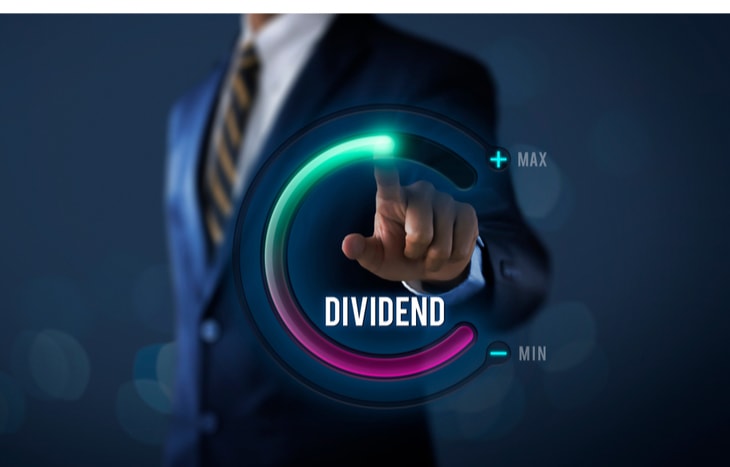
It doesn't matter if you're an experienced trader or a beginner. Understanding forex liquidity can be crucial. It's important to know what makes forex markets tick in order to make sure you're not wasting your time and money. Also, you'll want to learn how currency pairings affect liquidity. You will want to find out if your broker offers the highest level liquidity.
The Forex market's liquidity is determined by the number of currency pairs that are traded during any one session. It is also important to take into account the time of day when you are trading. This is important as some markets may be thinner than others. Volume indicators can be used by traders to get a better idea of how the market flows.
A high volume trade in the forex market is often an indicator that liquidity is good. Liquidity also has an impact on order execution, spreads, bid-offer spreads, as well. This is especially true for large currency pairs. If the broker does not have sufficient liquidity, your order will be re-quoted or priced at a gap.

There are two main types of forex liquidity, high and low. High liquidity refers specifically to the most liquid currency pair, such as EUR/USD. Low liquidity refers the less liquid currency pairs such as GBP/JPY. Low liquidity in the Forex market can lead to price gaps during market moving events, such as a central bank's announcement.
Forex markets are a 24-hour market. This means there is both high liquidity periods and low liquidity periods. Markets with shorter trading hours have fewer participants. This is particularly true for exotic currency pairs.
Because there are fewer delays between orders being processed, a market with high liquidity makes trading easier. The Forex market is a great place for beginners to trade. However, liquidity in Forex does not translate to real-world liquidity. Additionally, you should consider leverage. This increases your risk for losing trades. Leverage can help you increase your trading profits but it can also be dangerous if used incorrectly.
You have two options for liquidity indicators to choose from: tick volume indicator or volume bar. Because they can be applied to any price feed, tick volume indicators are very useful. The volume bar gives you an idea of how liquid a particular currency pair is, but these indicators are less useful if you're using a small broker's platform.

The volume bar, which gives an indicator of Forex market liquidity, is the best. It provides a measure of the volume traded during a certain time period. For beginners, it is a good idea that you start with the most liquid currency pair. This will increase your chances of achieving a reward to risk ratio.
There are also a few indicators that the Forex market has, including the Force Index. The Force Index offers an indirect view at Forex liquidity. Although it isn't as exact as the tick volume indicator but it is still an indicator of how the market flows.
FAQ
What is a fund mutual?
Mutual funds are pools or money that is invested in securities. Mutual funds provide diversification, so all types of investments can be represented in the pool. This reduces the risk.
Mutual funds are managed by professional managers who look after the fund's investment decisions. Some funds permit investors to manage the portfolios they own.
Mutual funds are often preferred over individual stocks as they are easier to comprehend and less risky.
Are bonds tradable?
Yes they are. Bonds are traded on exchanges just as shares are. They have been for many, many years.
The only difference is that you can not buy a bond directly at an issuer. A broker must buy them for you.
Because there are fewer intermediaries involved, it makes buying bonds much simpler. This also means that if you want to sell a bond, you must find someone willing to buy it from you.
There are several types of bonds. Some pay interest at regular intervals while others do not.
Some pay interest annually, while others pay quarterly. These differences allow bonds to be easily compared.
Bonds can be very useful for investing your money. In other words, PS10,000 could be invested in a savings account to earn 0.75% annually. You would earn 12.5% per annum if you put the same amount into a 10-year government bond.
If you put all these investments into one portfolio, then your total return over ten-years would be higher using bond investment.
Why is a stock security?
Security refers to an investment instrument whose price is dependent on another company. It can be issued as a share, bond, or other investment instrument. The issuer can promise to pay dividends or repay creditors any debts owed, and to return capital to investors in the event that the underlying assets lose value.
How do you invest in the stock exchange?
You can buy or sell securities through brokers. Brokers buy and sell securities for you. When you trade securities, brokerage commissions are paid.
Banks charge lower fees for brokers than they do for banks. Banks offer better rates than brokers because they don’t make any money from selling securities.
You must open an account at a bank or broker if you wish to invest in stocks.
If you hire a broker, they will inform you about the costs of buying or selling securities. Based on the amount of each transaction, he will calculate this fee.
You should ask your broker about:
-
To trade, you must first deposit a minimum amount
-
Are there any additional charges for closing your position before expiration?
-
what happens if you lose more than $5,000 in one day
-
How many days can you keep positions open without having to pay taxes?
-
How you can borrow against a portfolio
-
Transfer funds between accounts
-
how long it takes to settle transactions
-
the best way to buy or sell securities
-
How to Avoid fraud
-
How to get help for those who need it
-
If you are able to stop trading at any moment
-
If you must report trades directly to the government
-
If you have to file reports with SEC
-
whether you must keep records of your transactions
-
whether you are required to register with the SEC
-
What is registration?
-
How does it impact me?
-
Who is required to register?
-
When should I register?
Statistics
- Individuals with very limited financial experience are either terrified by horror stories of average investors losing 50% of their portfolio value or are beguiled by "hot tips" that bear the promise of huge rewards but seldom pay off. (investopedia.com)
- Ratchet down that 10% if you don't yet have a healthy emergency fund and 10% to 15% of your income funneled into a retirement savings account. (nerdwallet.com)
- US resident who opens a new IBKR Pro individual or joint account receives a 0.25% rate reduction on margin loans. (nerdwallet.com)
- For instance, an individual or entity that owns 100,000 shares of a company with one million outstanding shares would have a 10% ownership stake. (investopedia.com)
External Links
How To
How to create a trading plan
A trading plan helps you manage your money effectively. It will help you determine how much money is available and your goals.
Before setting up a trading plan, you should consider what you want to achieve. You may want to save money or earn interest. Or, you might just wish to spend less. If you're saving money, you might decide to invest in shares or bonds. You could save some interest or purchase a home if you are earning it. Perhaps you would like to travel or buy something nicer if you have less money.
Once you know what you want to do with your money, you'll need to work out how much you have to start with. This depends on where you live and whether you have any debts or loans. It's also important to think about how much you make every week or month. Your income is the amount you earn after taxes.
Next, make sure you have enough cash to cover your expenses. These include rent, bills, food, travel expenses, and everything else that you might need to pay. These expenses add up to your monthly total.
You'll also need to determine how much you still have at the end the month. That's your net disposable income.
Now you've got everything you need to work out how to use your money most efficiently.
Download one from the internet and you can get started with a simple trading plan. You could also ask someone who is familiar with investing to guide you in building one.
Here's an example spreadsheet that you can open with Microsoft Excel.
This is a summary of all your income so far. This includes your current bank balance, as well an investment portfolio.
Another example. This was designed by a financial professional.
This calculator will show you how to determine the risk you are willing to take.
Don't try and predict the future. Instead, think about how you can make your money work for you today.